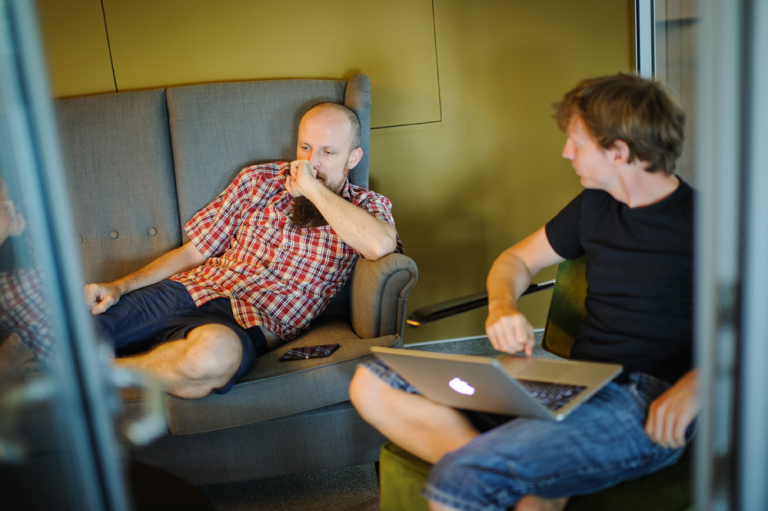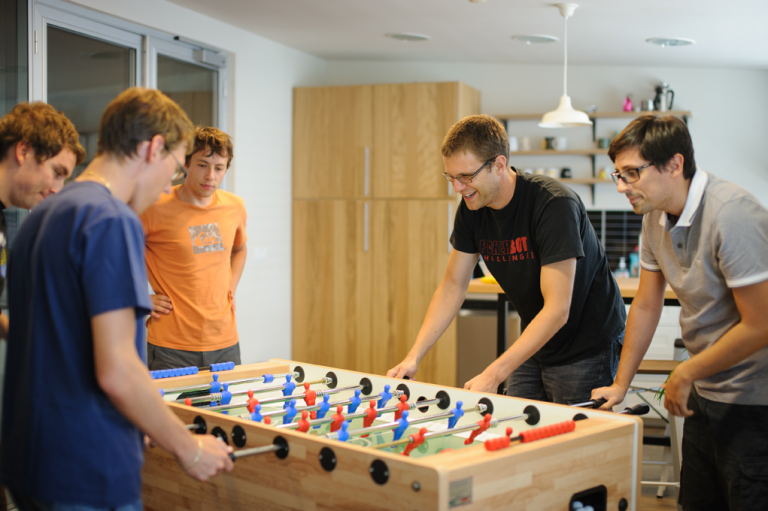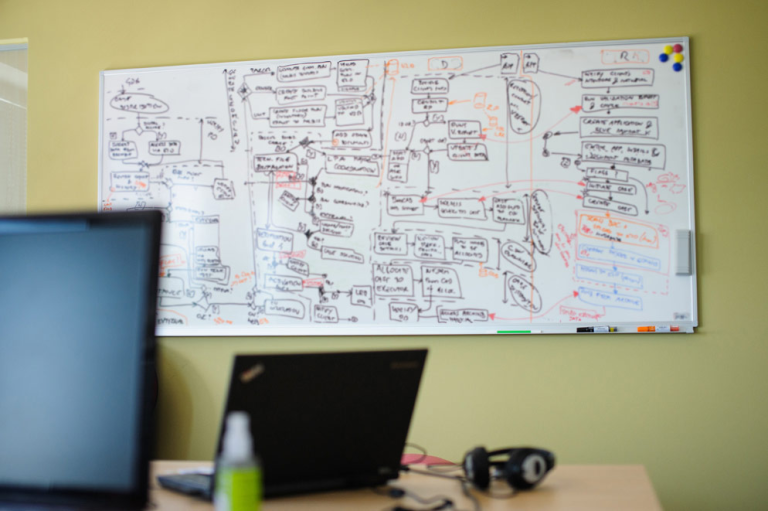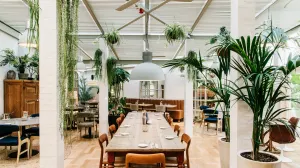How Sinergise built a platform that is used by ESA and improved the work of thousands of experts
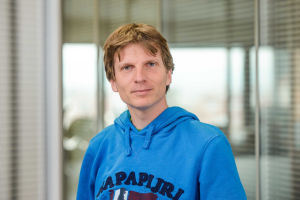
At the beginning of 2020, I’ve asked who your favourite influencer in Earth Observation is, and you’ve responded. I've gathered over 200 people, and I plan to interview some of them.
This post is about Grega Milcinski, General Manager and co-founder at Sinergise.
As per his declaration, he is just a guy who was interested in physics and ended up in the computer world. He is obviously, more than that. He activates in the geospatial field for more than 15 years and has lots of valuable info to share with us.
I am grateful that he agreed to spend some of his precious time answering all my questions, and so should we all be.
Grega, can you tell us about yourself, and how did you end up at Sinergise?
I am a just guy who was interested in physics and ended up in the computer world and just followed that path. I didn’t have to make many decisions, it was just there.
I was studying physics, and in my second year, I’ve joined a university study group to work on the particle accelerator software. That particular group evolved into a company, nowadays called Cosylab.
We work in the geospatial field for more than 15 years. We were, however, focusing on GIS mostly, leaving Earth Observation aside.
At one point, the GIS department of Cosylab became so significant that we decided to do a spin-off. Since then, I am the CEO of Sinergise. The reason why I am the CEO is that I am not good enough as a programmer 😁
Then, in 2015, we wanted to provide access to Sentinel-2 data to Ghana's Ministry of Housings and Lands. We realised then that the technology, available for processing of data, simply does not work at the scale of Sentinel mission. So we decided to use our GIS know-how and try to process the data in real-time.
We partnered with AWS. They kindly offered to host the data under their open data programme. They made sure that Sentinel data are replicated there and then developed our “cloud API driver”.
We were not sure that this will work fast enough. But it did. And it was so cost-effective. It allowed us to offer wider access to the data using Sentinel Playground and EO Browser. What's great for us is that we were able to offer both apps are for free.
Since 2015, a part of our company focused exclusively on Sentinel Hub, occupying a good 1/3 of our 60-people team.
What was the very first moment of glory for the Sentinel Hub team? When did you feel that it is for real?
We realized that the things are on the right track for us was when people from ESA and from the [European] Commission, started to use the Sentinel Playground, which was the first really useful tool we’ve launched out.
It was huge for us because the guys from the European Commission were signing contracts worth billions of euros for the Copernicus and the ESA were signing contracts for differing tools and satellites. The problem was that due to the extremely time consuming and complex process available at that time, most of them were not able to get hold of the data themselves. They often had to go through their subordinates, who would prepare nice images in a few hours or days.
Back then, Playground was the only tool that made it possible for non-technical experts or people without lots of time to spend, to observe just about any observation ever done, in a couple of seconds. This was the moment when we realized that this is really something.
We have created a tool that can show you all the Sentinel data, globally and immediately.
Up to that point, nobody even believed that this was possible. Maybe apart of Google, which had the right budget and the resources, but there was nobody even talking about it.
At that time, ESA had default access to the data required downloading of GB+ size of the files. We made all this data available instantly, and when we see that this was genuinely working, that you can go to any part of the world, and you can get an image, this was a big thing for us.
We were able to this on a shoe-string budget as we were a small company. We were not investing millions of dollars, but thousands.
This was the moment we realized we'd done something significant, and we can develop a story out of it. This was the moment we started focusing on the product, not just on being a toy project.
Could you tell us more about innovation and engineering culture in Sinergise?
I am not sure I know the correct answer, as I don’t feel like we have a standard formula for that.
First, we have small teams, five to ten people, and we put a lot of effort into hiring smart people. We don’t look for people with lots of experience but smart guys with open minds.
The other thing that is done differently from the other is that we give our new team members, something essential to work on, from the beginning. Most of the time it works out, sometimes it doesn’t.
Basically, we just let them deal with it and find solutions. Maybe we are following a bit agile approach, but mostly, we just let them do their work, and the most important thing is that we really try to make things to work instead only appear that they work, which is something that other projects do.
We want to give our people the opportunity to actually have users benefiting from their products because this is what motivates them and make them innovate.
Comparing the moments when you were starting and where you are now – what's changed?
Two main things changed - data and cloud infrastructure. There were Landsat data available for quite a while, but due to resolution (30/15 meters) and long revisit cycles (16 days), these were primarily useful for science.
Sentinel-2 changed everything, with actually beneficial resolution and short revisit cycles. This opened the doors to actual commercial applications.
But even Sentinel-2 would not be sufficient if it would not have been so cheap to work with it, enabled primarily by cloud providers and their object storage, which works really really well with PBs of data.
AWS lead the pack, now you have Google and DIAS-es (Data and Information Access Services – Ed.) offering the same. It’s quite amazing how cost-efficient everything can be.
Our EO Browser, for example, would typically be a system, which would need sizeable corporate funding or millions of EUR per year of some EC institution. But we can afford to operate this ourselves even to the level of providing free access to the application.
It costs us circa 5.000 EUR per month to offer such a widely used service. Peanuts compared to the budget of previous space systems.
What's today's biggest challenge in the domain of Earth Observation?
The amount of data is so large that one cannot avoid using machine learning if they want to make use of it.
ML is a tricky beast, though. On one side, you have tools like TensorFlow, where you dump the data in and you get somehow useful (demonstrable) results out. But you have no idea and control what is happening, and the process often costs more than the value you get out.
It’s “great” for startups, who want to show a new shiny thing and for some research groups. But it does not help much with the advancement of the field.
We should all be working towards the methods, for example, that is understandable and which allows repetition of the experiment/process by 3rd parties. Our open-source eo-learn package is a step in this direction.
We are happy to see that some others (e.g., Development seed) are willing to cooperate and contribute.
Any advice for the entrepreneurs who start their businesses in Earth Observation?
It’s difficult to create added value worth millions of EUR at once. However, it's possible to create an added value of tens of EUR and then sell this worldwide.
So, whenever building a product, make sure that it costs less to operate it than the added value coming out. Also, make sure you are addressing the whole world, not just your country.
I asked for Grega’s advice, as I know that succeeding can be challenging. If you also need professional support, let’s talk.
I help startups faster getting to the market with a system based on visualisation and rapid experiments. Check out 7.21 Lab
If you would have a Harry Potter's magic wand, what'd you change in your job or your personal life?
I asked myself a more straightforward question,
What would I do else if I wouldn’t work for Sinergise?
I don’t see many more options where I would instead go and work there rather what I work here.
Generally, I do most of the things that I please. If I could choose to change anything, I would find more people to work with. This is a real struggle this day. We have more opportunities than we have the capacity to get them done. That’s the only thing.
In my free time, I do paragliding and hiking mountings. Actually, I combine my two hobbies. I climb the mountain and then I fly down. I also enjoy running as it helps me clear my mind.
I am quite content with my life and my work.
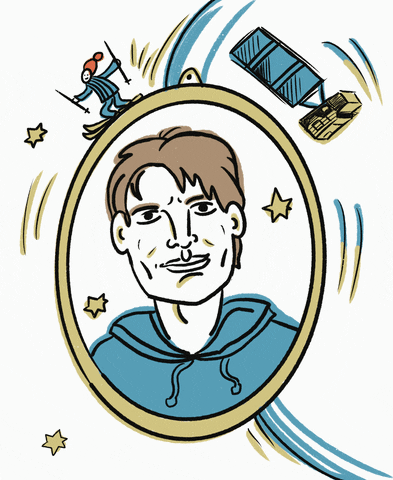
Editor's note
I hope you enjoyed my interview with Grega. This talk is the result of my eager wishes to give back to the community, valuable content, for free, and to engage more young people into the science world.
If you’re willing to lend a helping hand too, you can do it by buying me a cup of coffee.
See you next time.
